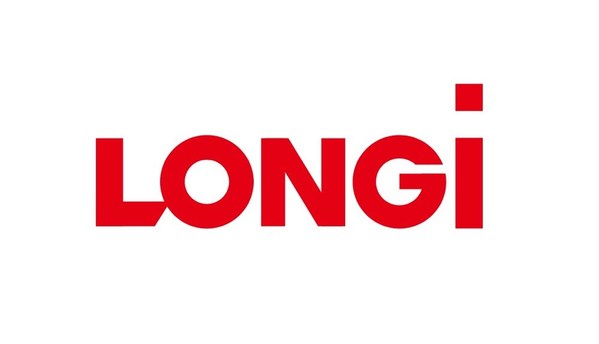 |
XI'AN, China, March 1, 2024 /PRNewswire/ -- Recently, LONGi collaborated with Jiangsu University of Science and Technology and Australia Curtin University to manufacture the first crystalline silicon heterojunction solar cell with high flexibility and high power-to-weight ratio. The related research results were published in the international journal Nature under the title "Flexible silicon solar cells with high power to weight ratios".
Crystalline silicon solar cells are currently the most mature and widely used photovoltaic power generation technology, and are the most cost-effective power generation choice in most regions of the world. Although crystalline silicon solar cells currently account for over 95% of the solar cell market, they are difficult to apply in scenarios that require low material weight or high material flexibility, such as floating photovoltaics on the sea, curved roofs, satellites, spacecraft, and drones. It is necessary to further reduce the weight of solar cells and improve their flexibility.
Therefore, reducing the thickness of silicon wafers to a much thinner thickness than typical crystalline silicon solar cells and integrating the advantages of thin-film solar cells into crystalline silicon solar cells is a focus of many studies. In addition, for decades, the power conversion efficiency (PCE) of all studied thin crystalline silicon solar cells (55-130 microns) has been maintained in the range of 23.27% -24.70%, and the photoelectric conversion efficiency of large-area crystalline silicon solar cells is difficult to exceed 26%.
In this study, this three-party team collaborated to develop new processes such as surface interface passivation and doping contact growth. The test results show that the five products with thicknesses ranging from 57 microns to 125 microns have achieved conversion efficiencies of over 26%, with the highest reaching 26.81%. Among them, the 57 micron thick cell has a power-to-weight ratio of 1.9 watts per gram, a curvature radius of 19 millimeters. Its power-to-weight ratio is 2-3 times than that of existing products on the market. The relevant data has been certified by the authoritative testing agency Hamelin Solar Energy Research Institute in Germany.
The research results demonstrate the potential of crystalline silicon solar cells to become a class of thin film solar cells with significant flexibility and plasticity, which can undergo various deformations such as bending and curling. In contrast, traditional crystalline silicon solar cells (≥ 150 microns) produce relatively small distortions.
Nature is one of the world's leading scientific journals and the most cited multidisciplinary journal. The journal has ranked first in the impact factor of interdisciplinary fields for many consecutive years, and many of its most important and cutting-edge research results have been published in the form of short messages in the journal.
About LONGi
Founded in 2000, LONGi is committed to being the world's leading solar technology company, focusing on customer-driven value creation for full scenario energy transformation.
Under its mission of 'making the best of solar energy to build a green world', LONGi has dedicated itself to technology innovation and established five business sectors, covering mono silicon wafers cells and modules, commercial & industrial distributed solar solutions, green energy solutions and hydrogen equipment. The company has honed its capabilities to provide green energy and has more recently, also embraced green hydrogen products and solutions to support global zero carbon development. www.longi.com